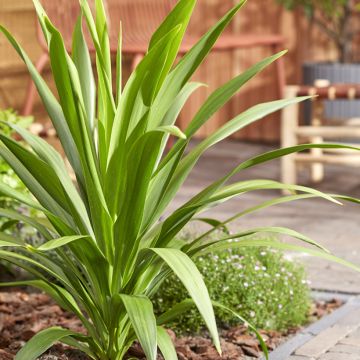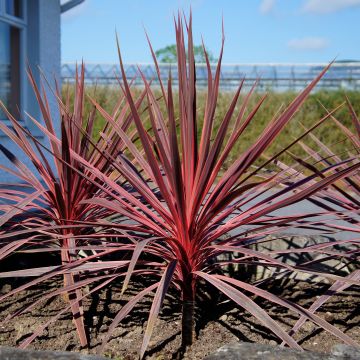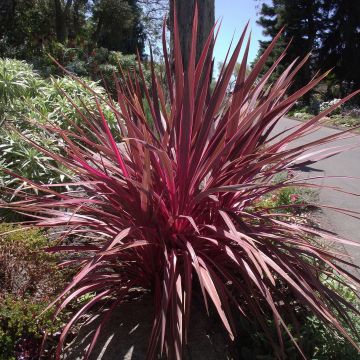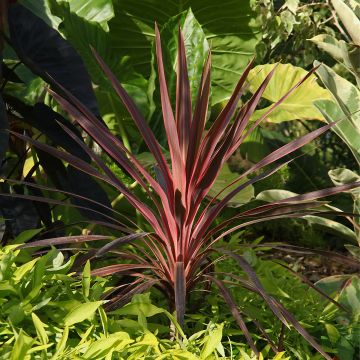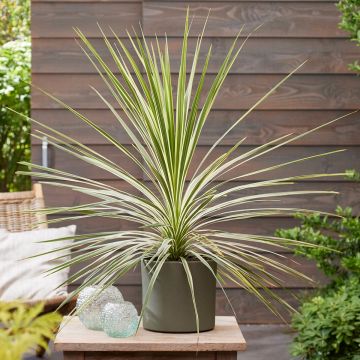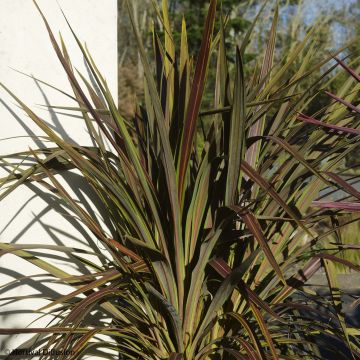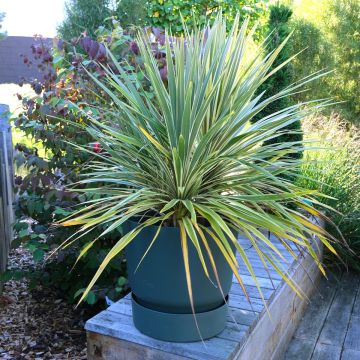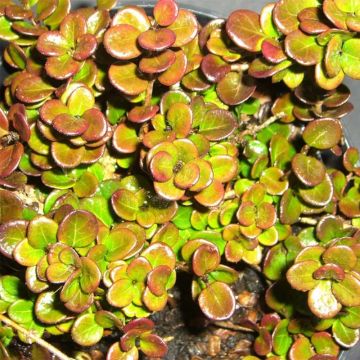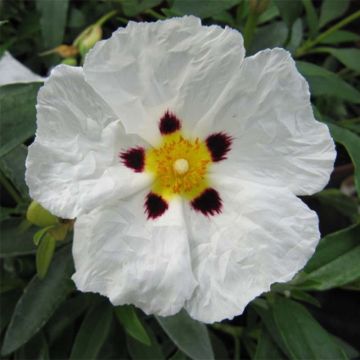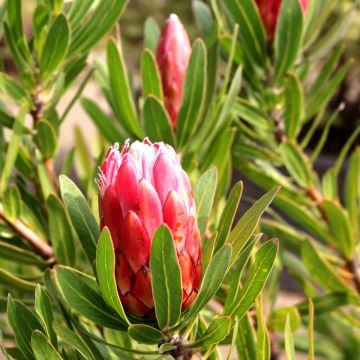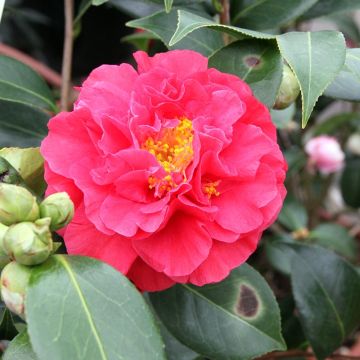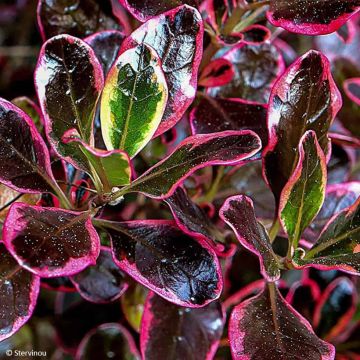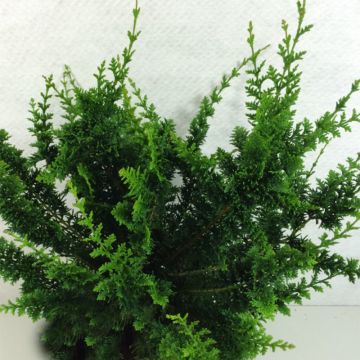Shipping country and language
Your country of residence may be:
Your country of residence is:
For a better user experience on our website, you can select:
Your shipping country:
-
Andorra
-
Austria
-
Belgium
-
Bulgaria
-
Canada
-
Chile
-
Croatia
-
Cyprus
-
Czechia
-
Denmark
-
Estonia
-
Finland
-
France
-
Germany
-
Greece
-
Hungary
-
Iceland
-
Ireland
-
Italy
-
Latvia
-
Lithuania
-
Luxembourg
-
Malta
-
Monaco
-
Netherlands
-
Poland
-
Portugal
-
Romania
-
Slovakia
-
Slovenia
-
Spain
-
Sweden
-
Switzerland
-
United Kingdom
We only deliver seed and bulb products to your country. If you add other products to your basket, they cannot be shipped.
Language:
-
French
-
German
-
Spanish
-
English
-
Italian
My Account
Hello
My wish lists
Log in / Register
Existing customer?
New customer?
Create an account to track your orders, access our customer service and, if you wish, make the most of our upcoming offers.


Cordyline australis Black Knight
Cordyline australis Black Knight
Cordyline australis Black Knight
Cabbage Tree, Cabbage Palm
Why not try an alternative variety in stock?
View all →Order in the next for dispatch today!
Dispatch by letter from €3.90.
Delivery charge from €5.90 Oversize package delivery charge from €6.90.
More information
This item is not available in your country.
Schedule delivery date,
and select date in basket
This plant carries a 24 months recovery warranty
More information
We guarantee the quality of our plants for a full growing cycle, and will replace at our expense any plant that fails to recover under normal climatic and planting conditions.
From €5.90 for pickup delivery and €6.90 for home delivery
Express home delivery from €8.90.
Does this plant fit my garden?
Set up your Plantfit profile →
Description
With its resemblance to a palm, Cordyline australis 'Black Knight' fits in any garden, whether it's a small garden, an exotic flower bed, or a large container. It's the perfect plant for coastal gardens, as it is resistant to wind and salt spray. It is moderately hardy and thrives in a mild climate. Elsewhere, it can be grown in a pot. This bushy, perennial plant has long linear leaves that are slightly arched and deep burgundy to intense purple. It blooms in summer, producing huge panicles of white, fragrant flowers. These are followed by bluish-white fruits.
Cordyline australis belongs to the Agavaceae family and is endemic to New Zealand. In its natural habitat, this tree-like perennial plant can reach a height of 20m and forms a sturdy, branching trunk. Each tip forms a cluster of linear leaves that can grow up to 1m long. Cordyline australis can be found in diverse habitats, such as forest edges, riverbanks, and open areas, especially near marshes. The 'Black Knight’ variety stands out with its evergreen foliage, which is deep burgundy to dark and glossy purple. Its long, linear leaves are gathered in an elongated cluster, reaching between 1.5 and 2m in all directions. Over time, it forms a small tree with a single trunk and branches adorned with leafy clusters. The white flowers are nectar-rich and delicately scented, forming large, dense panicles measuring 60 to 100cm long. These are followed by non-edible berries measuring 5 to 7mm in diameter, loved by birds.
As it is resistant to wind and salt spray, it's the ideal plant for coastal gardens. The 'Black Knight’ Cordyline with its dark foliage is easy to combine in a flower bed. It can also be planted in a pot on a balcony or terrace, or as a standalone plant on a lawn in a small garden. In an exotic-looking flower bed, pair it with a red Abyssinian banana tree with lush, purple-tinged foliage, and add colour with the orange flowers of Kniphofia ‘Alcazar’, Croscomia ‘Carmine Brillant’, or Canna ‘Angélique’ with purple-violet foliage. In a container, create contrast by opting for a Delosperma Wheels of Wonder ‘Golden’ with a spreading habit and bright yellow flowers.
Report an error about the product description
Plant habit
Flowering
Foliage
Botanical data
Cordyline
australis
Black Knight
Agavaceae
Cabbage Tree, Cabbage Palm
Dracaena australis Black Knight
Cultivar or hybrid
Other Cordyline
Planting and care
Cordyline australis 'Black Knight' thrives in full sun or sometimes in partial shade, sheltered from cold winds. Plant it in fertile, moist, and well-drained soil. It withstands winds and sea spray, making it a perfect plant for coastal gardens. It likes high summer temperatures and tolerates drought well. However, it does not like waterlogged soils. When planting in spring, add some sand. In winter, protect the top of the bush with a winter cover and mulch its base. It is moderately hardy (up to -7°C) and best grown in a pot in regions with cold winters. Cordyline does not require any specific pruning. Remove winter-damaged leaves and faded flowers once flowering is finished. Do not overwater, only water in case of drought.
Planting period
Intended location
Care
This item has not been reviewed yet - be the first to leave a review about it.
Evergreen shrubs
Haven't found what you were looking for?
Hardiness is the lowest winter temperature a plant can endure without suffering serious damage or even dying. However, hardiness is affected by location (a sheltered area, such as a patio), protection (winter cover) and soil type (hardiness is improved by well-drained soil).

Photo Sharing Terms & Conditions
In order to encourage gardeners to interact and share their experiences, Promesse de fleurs offers various media enabling content to be uploaded onto its Site - in particular via the ‘Photo sharing’ module.
The User agrees to refrain from:
- Posting any content that is illegal, prejudicial, insulting, racist, inciteful to hatred, revisionist, contrary to public decency, that infringes on privacy or on the privacy rights of third parties, in particular the publicity rights of persons and goods, intellectual property rights, or the right to privacy.
- Submitting content on behalf of a third party;
- Impersonate the identity of a third party and/or publish any personal information about a third party;
In general, the User undertakes to refrain from any unethical behaviour.
All Content (in particular text, comments, files, images, photos, videos, creative works, etc.), which may be subject to property or intellectual property rights, image or other private rights, shall remain the property of the User, subject to the limited rights granted by the terms of the licence granted by Promesse de fleurs as stated below. Users are at liberty to publish or not to publish such Content on the Site, notably via the ‘Photo Sharing’ facility, and accept that this Content shall be made public and freely accessible, notably on the Internet.
Users further acknowledge, undertake to have ,and guarantee that they hold all necessary rights and permissions to publish such material on the Site, in particular with regard to the legislation in force pertaining to any privacy, property, intellectual property, image, or contractual rights, or rights of any other nature. By publishing such Content on the Site, Users acknowledge accepting full liability as publishers of the Content within the meaning of the law, and grant Promesse de fleurs, free of charge, an inclusive, worldwide licence for the said Content for the entire duration of its publication, including all reproduction, representation, up/downloading, displaying, performing, transmission, and storage rights.
Users also grant permission for their name to be linked to the Content and accept that this link may not always be made available.
By engaging in posting material, Users consent to their Content becoming automatically accessible on the Internet, in particular on other sites and/or blogs and/or web pages of the Promesse de fleurs site, including in particular social pages and the Promesse de fleurs catalogue.
Users may secure the removal of entrusted content free of charge by issuing a simple request via our contact form.
The flowering period indicated on our website applies to countries and regions located in USDA zone 8 (France, the United Kingdom, Ireland, the Netherlands, etc.)
It will vary according to where you live:
- In zones 9 to 10 (Italy, Spain, Greece, etc.), flowering will occur about 2 to 4 weeks earlier.
- In zones 6 to 7 (Germany, Poland, Slovenia, and lower mountainous regions), flowering will be delayed by 2 to 3 weeks.
- In zone 5 (Central Europe, Scandinavia), blooming will be delayed by 3 to 5 weeks.
In temperate climates, pruning of spring-flowering shrubs (forsythia, spireas, etc.) should be done just after flowering.
Pruning of summer-flowering shrubs (Indian Lilac, Perovskia, etc.) can be done in winter or spring.
In cold regions as well as with frost-sensitive plants, avoid pruning too early when severe frosts may still occur.
The planting period indicated on our website applies to countries and regions located in USDA zone 8 (France, United Kingdom, Ireland, Netherlands).
It will vary according to where you live:
- In Mediterranean zones (Marseille, Madrid, Milan, etc.), autumn and winter are the best planting periods.
- In continental zones (Strasbourg, Munich, Vienna, etc.), delay planting by 2 to 3 weeks in spring and bring it forward by 2 to 4 weeks in autumn.
- In mountainous regions (the Alps, Pyrenees, Carpathians, etc.), it is best to plant in late spring (May-June) or late summer (August-September).
The harvesting period indicated on our website applies to countries and regions in USDA zone 8 (France, England, Ireland, the Netherlands).
In colder areas (Scandinavia, Poland, Austria...) fruit and vegetable harvests are likely to be delayed by 3-4 weeks.
In warmer areas (Italy, Spain, Greece, etc.), harvesting will probably take place earlier, depending on weather conditions.
The sowing periods indicated on our website apply to countries and regions within USDA Zone 8 (France, UK, Ireland, Netherlands).
In colder areas (Scandinavia, Poland, Austria...), delay any outdoor sowing by 3-4 weeks, or sow under glass.
In warmer climes (Italy, Spain, Greece, etc.), bring outdoor sowing forward by a few weeks.
